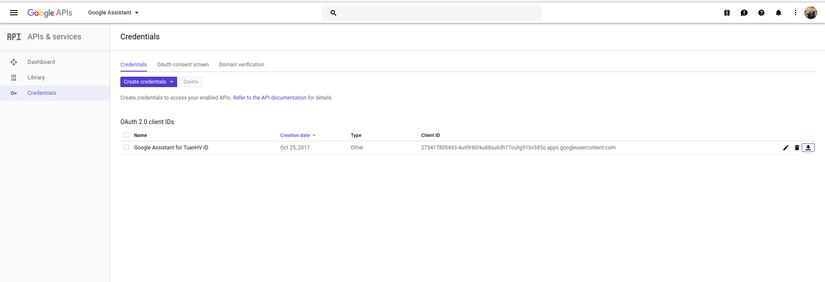

- #Pip install google assistant sdk full
- #Pip install google assistant sdk software
- #Pip install google assistant sdk code
So, watch out for Part 2 of this smart speaker tutorial series.

#Pip install google assistant sdk full
With the above steps, we have successfully build a good foundation for our smart speaker.įurthermore, we are just scratching the surface in terms of the full capabilities of the ReSpeaker Core v2.0.
#Pip install google assistant sdk code
In addition, we also created a project in the Google Cloud Platform and Actions on Google Console, Enabled the Google Assistant API, installed the SDK and sample code and ran the Google Assistant as a service. So to summarize, we installed, setup and configured the ReSpeaker Core v2.0. To conclude, we have successfully embedded the Google Assistant into our ReSpeaker Core v2.0 using Google Assistant as a Service. We can check this with the following command in the Terminal. Secondly, note that you also have the option to connect the board to Bluetooth speakers or a speaker with a JST 2.0 pin. python -m pip install google-assistant-sdk samples Use -user at the end of previous command for admin rights. Use the The Google Assistant Library for Python is a turnkey solution for anyone who wants to quickly integrate the Assistant into a project. Firstly, you can plug active speakers or headphones into this port. Samples and Tools the Google Assistant SDK. 3.2 Audio Configurationįor the purpose of this tutorial, we will use a normal active speaker and connect to the ReSpeaker Core v2.0 board using its 3.5mm audio jack to output audio. Therefore, you can now access and control the device using the VNC viewer remotely instead of actually connecting the monitor, keyboard, and mouse to the board directly and using it. Step 7: Therefore, we should now be connected to our ReSpeaker Core v2.0 board remotely using the VNC Viewer. Step 6: Download VNC Viewer to your computer or mac and enter the IP address and remotely connect to the system using the following.
#Pip install google assistant sdk software
Or unzip the *.img.xz file to a *.img file, then burn it to SD card with other image writing tools.Īfter that, click the Plus icon to add the image you just download, the software will automatically select the SD card you plug. Step 3. Click to download Etcher here, and burn the *.img.xz file directly to your SD card with Etcher. To open Run, press Win+R and type in: py -m pip install google-assistant-sdk samples Wait for the installation, type again: py -m pip install -upgrade google-auth-oauthlib tool Open Google Assistant folder from C: Drive and locate the JSON file you recently saved in Step 11. So, you need an SD card with a capacity of more than 4GB. Step 2. Plug the SD card into your PC or MAC with an SD card reader. You can download the images for the ReSpeaker Core v2.0 here. Step 1: Download the latest version of the Debian image for the ReSpeaker Core v2.0. Hence, we will be using this as a foundation to build our smart speaker. Also, the board features a six-microphone array with speech algorithms including DoA (Direction of Arrival), BF (Beam-Forming), AEC (Acoustic Echo Cancellation), etc. So, it is based on the Rockchip RK3229, a quad-core ARM Cortex A7, running up to 1.5GHz, with 1GB RAM. Seeed’s ReSpeaker Core v2.0 is designed for voice interface applications.


 0 kommentar(er)
0 kommentar(er)
